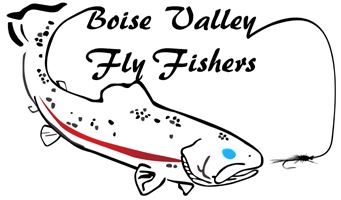Trout make their living by eating bugs. During non-hatch times they feed opportunistically subsurface but during a hatch they get tuned-into looking for a specific “bug-target”—ignoring everything else. During these times the angler who matches the size, shape and color of the “bug-target” will get more fish to take their fly.

SIZE
Matching size is critical for success but anglers often midjudge it or don’t give it much thought. To us the difference between a size #16 and size #18 fly doesn’t look like much but realize that a size #16 is 25% larger—enough for an educated trout to notice.
DETERMINING BUG SIZE
To accurately measure the size of the hatching bug you need to obtain a sample. Wade in below the rising fish and use a small aquarium net to scoop up your prize. Compare the bug sample to your flys and choose something that matches the size, shape and color. It helps to measure the bug-size for future reference. You can use a small ruler but I recommend the Bugometer, which is a pocket sized “bug ruler” that has hook sizes printed on it. The Bugometer is a critical tool to carry to help you match the hatch and is available thru Dry Fly Innovations.
BUG SIZE VARIATION
Bug-size varies throughout the season and across locations. As a general trend, Nymphs and Terrestrials get larger through the season while adults get smaller. For example a Skwala nymph is a size #14 (3xl) in October, growing to a #12 in January and a #8 by the time it hatches in April. Similarly Grasshoppers will be a size #12 early in the summer but can grow to a size #2 by Fall. While Adult PMDs can be a size #14 when the hatch starts, shrinking to a size #16 a few weeks later and are often a size #18 by the end of the hatch. BWOs tend to be larger in the Spring and smaller in the Fall and have significant size variations through the hatch.
SHAPE
Bug shape is generally considered if the natural has an “up-wing” (mayfly), “down-wing” (caddis) or “flat-wing” (stonefly). But it is also important to take note of the phase of the hatching bug. Does it have an emerging shuck? Does it have the outspread clear wings of a spinner? Does it have the egg-ball of an egg laying adult? Matching the phase of the bug on the water can often “crack the code” of what picky rising trout are taking.
COLOR
Color is often what anglers pay the most attention to but matching the exact shade isn’t usually needed. When matching the color pay special attention to the bottom of the bug, as this is what the trout sees.
PAY ATTENTION!
Paying attention to hatches pays dividends. In late June I noticed these fresh Golden Stone shucks at the river’s edge at the M.F. of the Boise—indicating a golden stone hatch was underway. I tied on a fly to match and BOOM! Fish ON, first cast.

This article first ran in the Hackle Bender club newsletter. Check out our old Hackle Benders!


